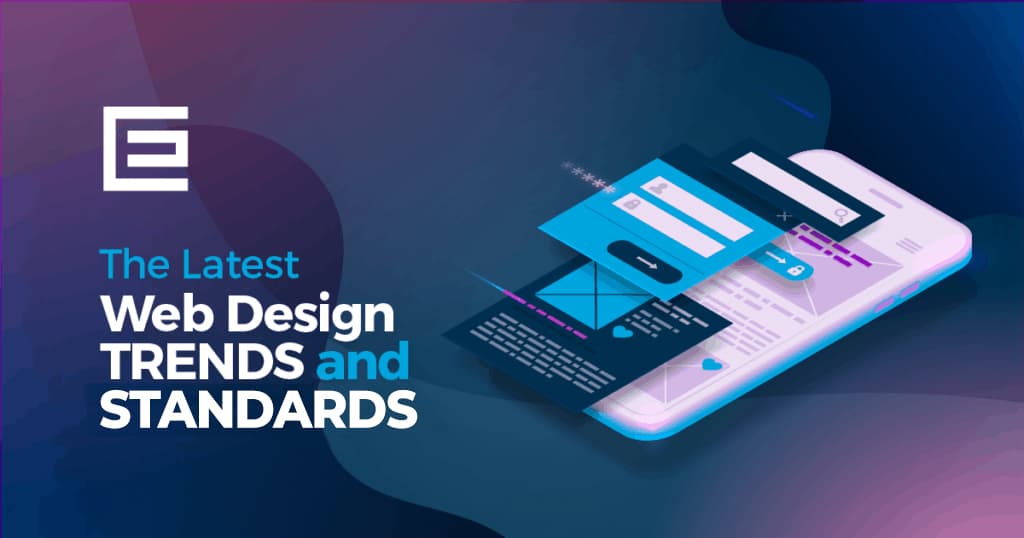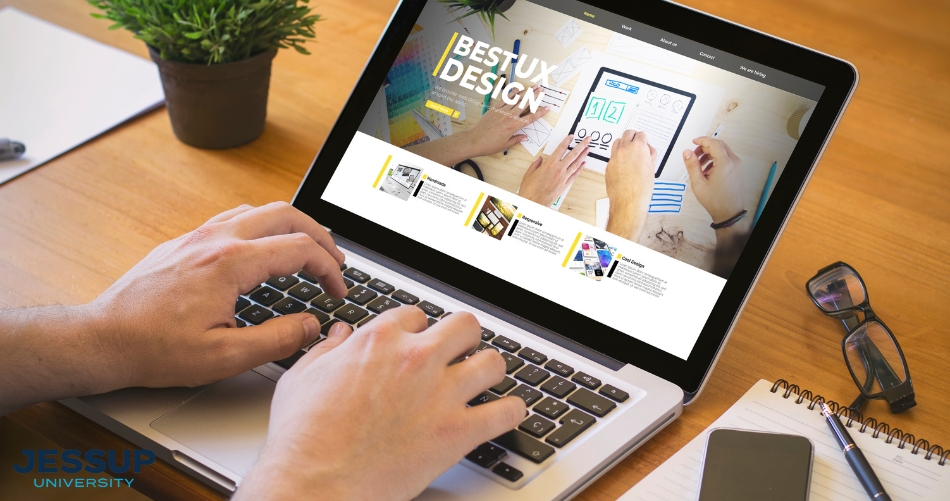Just How to Effectively Integrate Aesthetics and Functionality in Web Layout
When making a site, you need to strike an equilibrium in between visual appeals and performance. It's not practically looking good; your style needs to likewise offer an objective and overview individuals properly. By focusing on simplicity and intuitive navigation, you can produce an appealing experience. However what components absolutely boost usability while maintaining visual allure? Allow's check out the key concepts that can result in an unified mix of beauty and feature.
Understanding the Importance of Looks and Capability
When you develop an internet site, comprehending the equilibrium between aesthetic appeals and performance is vital for producing an efficient user experience. An aesthetically attractive website grabs attention, but it's the capability that keeps users engaged. If your site looks terrific however is tough to navigate, site visitors will rapidly lose rate of interest and leave.Consider your target audience and what attracts them in. You intend to create a design that mirrors your brand name while ensuring ease of usage. Structured layouts, user-friendly navigation, and clear phone call to action can enhance both aesthetic appeals and functionality.

Principles of Reliable Website Design
To develop a reliable web design, you require to comply with numerous essential concepts that improve both customer experience and visual appeal. Focus on simpleness; a tidy design helps individuals navigate quickly. Utilize a regular color pattern and typography to preserve coherence across your website. This cultivates familiarity and trust.Next, assure your design is receptive. Customers access internet sites on various gadgets, so your layout ought to adjust perfectly. Focus on visual hierarchy; emphasize vital components with shade, dimension, or placement to assist individuals' focus.Finally, incorporate ample white area. It protects against clutter and makes content much more absorbable. Remember, reliable internet design balances aesthetic appeals and functionality, so every layout selection should serve a function. By complying with these principles, you'll develop a website that's not just aesthetically enticing however also straightforward, eventually keeping visitors engaged and encouraging them to return.
Prioritizing Individual Experience
When prioritizing individual experience, you'll intend to start by understanding what your users truly need. Streamlining navigation design can make a substantial difference in how easily they find what they're looking for. Improving aesthetic hierarchy helps direct their interest to the most crucial components on your site.
Comprehending User Demands
Recognizing individual requirements is important for producing an interesting internet experience that keeps site visitors coming back. To accomplish this, you have to recognize the goals and choices of your target audience. Beginning by conducting customer research, like interviews or surveys, to collect understandings on what customers worth most. When interacting with similar internet sites, pay attention to their pain factors and challenges. This information permits you to tailor your layout, guaranteeing performance straightens with user assumptions. In addition, consider producing customer personas that represent various sectors of your audience, helping you picture their needs during the design procedure. When you focus on recognizing customer needs, you create an internet site that not just looks great however additionally supplies a seamless, delightful experience that cultivates loyalty.
Simplifying Navigating Style

Enhancing Aesthetic Pecking Order
A strong aesthetic pecking order is vital in guiding customers via your site and guaranteeing they engage with vital web content. To accomplish this, utilize dimension, spacing, and color purposefully. Make crucial components like headings larger and bolder than body message, attracting focus instantly. Use contrasting shades to highlight phone call to activity, urging clicks. In addition, employ adequate white area to different areas, making material digestible and inviting.Consider the circulation of info; organize elements practically, leading individuals' eyes from one indicate the next. Use aesthetic cues, like lines or arrows, to guide focus. By prioritizing visual hierarchy, you improve user experience and increase the likelihood of conversions, guaranteeing your website is both aesthetically pleasing and functionally reliable.
Shade Concept and Its Effect On Usability
While picking the ideal shades for your site may feel like a small information, it greatly affects use and individual experience. Shade influences exactly how users view info and can boost or impede navigating. Contrasting colors can aid vital elements stand out, making it much easier for visitors to find what they need.Additionally, consider the psychology of colors: blue usually inspires count on, while red produces seriousness. Understanding your target market can lead your color selections, ensuring they reverberate well.Moreover, regular color design assist develop brand identity, making your site a lot more unforgettable. Be careful-- as well numerous shades can bewilder customers. Adhere to a restricted combination that complements your content and maintains clarity.Incorporating ease of access is also necessary; verify your color mixes are pleasant for those with visual disabilities. By thoughtfully using shade theory, you'll enhance usability and develop a much more appealing user experience.
Typography: Harmonizing Design and Readability
Color choices established the phase for your web site, but typography plays an equally crucial function in improving user experience. You desire your message to communicate clearly while additionally mirroring your brand name's character. Start by picking typefaces that are not just appealing but also legible. Sans-serif typefaces usually function well for digital displays, as they're easier to review at different sizes.Maintain a power structure by making use of different font dimensions and weights; this guides individuals through your web content effortlessly. Take into consideration line spacing and letter spacing; too limited can annoy viewers, while as well loosened can disrupt the circulation. Limit your typeface choices to 2 or 3 to keep the layout cohesive.Finally, always check your typography across various gadgets and browsers. What looks great on one screen may not on one more. Stabilizing style with readability warranties that your message resonates, keeping your target market engaged and notified.
Receptive Layout: Making Appearances Deal With All Tools
To assure your site looks great on any type of tool, you'll require to embrace responsive style concepts. This approach assurances your website adapts to different display dimensions, providing an optimal customer experience. Beginning by using fluid grids and versatile pictures that scale flawlessly. Rather than repaired dimensions, choose percents and loved one units, allowing your design to change dynamically.Next, carry out media questions in your CSS. These let you use various designs based upon tool characteristics, like screen width. By doing this, you can preserve aesthetic charm while ensuring functionality.Don' t ignore touch targets; make sure switches and web links are simple to touch on smaller sized screens. Focus on crucial content, so users can easily browse your website no matter of their tool. By concentrating on these aspects, you'll develop an engaging, visually appealing experience that fulfills the demands of all customers, whether they get on a tablet, desktop, or smartphone .
Carrying Out Usability Testing for Continuous Enhancement
To enhance your web layout, you need to set clear use objectives that line up with customer needs. By conducting user examinations, you can collect valuable feedback on just how genuine people connect with your website. Assessing these results will certainly assist you make informed renovations and produce an extra efficient user experience.
Specifying Usability Goals
While looks can website draw customers in, defining use goals is crucial for guaranteeing their experience stays smooth and gratifying. Beginning by recognizing what you want individuals to accomplish on your website (website design london Ontario). Consider their actions, tasks, and needs. Are they looking for info, buying, or registering for a newsletter? Develop clear benchmarks to determine success, like job conclusion prices or time on job. Focus on instinctive navigation, available web content, and receptive design to improve functionality. Routinely revisit these goals as individual assumptions develop. By defining usability goals, you develop a framework for assessing and enhancing your web site's efficiency. This emphasis on use not only increases individual satisfaction but also enhances the total efficiency of your design
Carrying Out User Examinations
Performing individual tests is important for improving your internet site and ensuring it satisfies your audience's requirements. Beginning by identifying your target customers and producing an examination plan that details your goals. Utilize a mix of qualitative and measurable approaches, such as surveys, interviews, and task-based observations, to gather thorough feedback. Welcome individuals to browse your site while you observe their communications and keep in mind any type of problems they encounter. Urge open dialogue to record their thoughts and sensations regarding the style and capability. Keep sessions brief and focused, guaranteeing you cover essential areas without overwhelming individuals. Finally, ensure to document all searchings for, as this information will be very useful for making enlightened design choices that enhance both appearances and use.
Examining Test Results
Just how can you effectively analyze the results of your use examinations to drive continuous renovation? Begin by classifying comments right into typical motifs. Try to find patterns in user actions that highlight pain points or locations for enhancement. Usage quantitative information, like task conclusion prices and time on task, to determine functionality fairly. Do not forget to consider qualitative understandings from user remarks; they typically disclose underlying concerns that numbers can't show. Prioritize the most impactful searchings for and create actionable things for your design team. Remember, it has to do with repeating-- implement modifications, after that test once again. This cycle of testing, examining, and refining aids you equilibrium aesthetics and performance, guaranteeing your web site satisfies individual requirements successfully while preserving aesthetic appeal.
Frequently Asked Concerns
Just how Do I Select the Right Color Palette for My Site?
To choose the appropriate shade scheme for your website, consider your brand's personality, target audience, and psychological effect (website design london Ontario). Usage shade psychology, develop consistency, and assurance readability. Test mixes to see what resonates best with site visitors
What Devices Can Assist With Internet Layout Visual Appeals and Functionality?
You can make use of devices like Adobe XD, Figma, and Sketch to enhance your web style's looks and performance. These systems use user-friendly interfaces, collaboration features, and pre-made templates to streamline your creative procedure and enhance your styles.
How Can I Incorporate Animations Without Jeopardizing Functionality?
To include computer animations without jeopardizing functionality, focus on refined impacts that enhance customer experience. Use CSS animations for smoother interactions, warranty quick load times, and examination on various tools to keep efficiency while adding visual allure.
What Prevail Blunders to Prevent in Internet Style Visual Appeals?
When designing, stay clear of messy layouts, bad color options, and irregular font styles. Don't ignore mobile responsiveness, as it can alienate customers. Validate your style aligns with your brand name, creating a smooth experience that engages site visitors successfully.
How Commonly Should I Update My Site's Layout for Ideal Visual Appeals?
You need to update your internet site's style every 1-2 years to maintain up with trends and preserve ideal looks. Frequently restoring visuals assists involve warranties and visitors your website continues to be user-friendly and enticing. When you develop a web site, recognizing the equilibrium in between visual appeals and capability is vital for developing an effective individual experience. To develop a reliable internet design, you need to stick to numerous key principles that enhance both user experience and visual appeal. Users gain access to websites on various gadgets, so your style must adjust effortlessly. When prioritizing user experience, you'll want to start by comprehending what your individuals genuinely need. Beginning by performing user research, like interviews or surveys, to gather insights on what users value most.